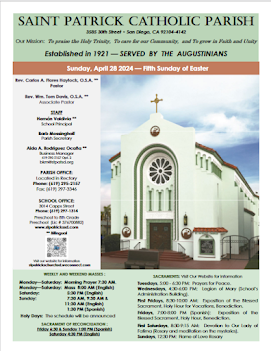
Wednesday, Mar 05, 2014
San Diego homeless shelters get a reprieve
But debate continues on how to get people off the street
 Pam Cooks, who’s been in the city’s homeless shelter since February 2013, is being treated for recurring ovarian cancer.
Pam Cooks, who’s been in the city’s homeless shelter since February 2013, is being treated for recurring ovarian cancer. - Photo by Kelly Davis
“He never came,” Ramirez says, “so I stayed the night, right there by the [Smart & Final].”
An elderly couple gave him water and a blanket. In the morning, the Alpha Project van pulled up and asked if he wanted a bed in the city’s homeless shelter.
When CityBeat talked to Ramirez last week, the shelter was scheduled to close March 31; meanwhile, he needs help getting to follow-up doctors appointments and is facing possible surgery on his leg in April.
But, late Monday afternoon, San Diego City Councilmember Marti Emerald proposed reallocating half of $2 million that had been earmarked for police body-worn cameras—the full amount’s not needed this year, new Police Chief Shelley Zimmerman told the City Council—to keep the city’s two homeless shelters open through June 30. It’ll be a week before that proposed extension is finalized, and it came with an admonishment from City Council President Todd Gloria: “It is very clear that on June 30, 2014, we will not have another council meeting where folks are coming here and telling us they didn’t know [the shelters were closing], or they need more time.”
The reprieve is good news for shelter residents like Ramirez, and Pam Cooks, who’s undergoing chemotherapy for recurring ovarian cancer, and 23-year-old Sinead, whose baby’s due in April. Camille Christensen is staying in the shelter while her husband Larry goes through a detox program. “He wouldn’t get any help because he wouldn’t leave me on the street. If I didn’t have this,” she says of her bed in the shelter, “he wouldn’t be doing that.”
The decision by former Mayor Bob Filner to keep both the 220-bed adult shelter, located on the border of Barrio Logan and East Village, and a 150-bed tent for veterans on Sports Arena Boulevard, open year-round has highlighted the city’s shortage of emergency shelter beds—most year-round beds are targeted to special populations, like women with children or homeless teens. And it’s fueled debate about the role the shelters play in the city’s overall goal to end homelessness.
“We have a built-in problem here,” says Dolores Diaz, executive director of the San Diego County Regional Task Force on the Homeless. “We don’t have a permanent emergency-shelter facility. The city and the Housing Commission, they do their best to, at the peak time when it’s the coldest, get folks off the street. But the problem is, we don’t have a permanent facility and we don’t have enough permanent housing.”
Filner allocated roughly $1.9 million in last year’s budget to keep the shelters open, despite warnings from the San Diego Housing Commission—which administers contracts to run the tents with the Alpha Project and Veterans Village of San Diego—that Filner didn’t take into account the full cost of utilities and maintenance. The Housing Commission estimated it would take an additional $933,267— or roughly $3.5 million total, including federal dollars that fund the veterans tent—to keep the shelters operating year-round.
Both shelters are sprung-structure tents, able to be collapsed and stored when not in operation.
“We expect housing people in tents is not a best practice,” Gloria said Monday, “and the communities across the country where they are ending homelessness, they are not doing it in tents, they are putting them in supportive housing. And the million dollars would go very, very far to support that.”
In February, in his capacity as interim mayor, Gloria announced that the shelters would revert to their normal four-month schedule, closing March 31 and reopening in late November. But he proposed that the $1.9 million Filner carved out in the budget continue to be spent on homelessness programs. The spending plan, which will need to be approved by the City Council in June, was developed with the input of folks involved in homeless services, from nonprofits to the police to Downtown business leaders. Jessica Lawrence, a Gloria staffer who worked for Jennifer LeSar on the Campaign to End Homelessness Downtown, helped spearhead the effort.
At a media briefing last month, Gloria emphasized that the proposal was drawn up with the goal of creating a more coordinated system of services and funding programs that had been proven to work, like the San Diego Police Department’s Serial Inebriate Program (SIP), which gets chronically homeless alcoholics into treatment and housing. SIP’s budget had been cut by a third in 2007, and Gloria’s plan restores that funding.
The largest portion of the money, $800,000, will go to operate the shelter during winter months and includes funding to boost case-management services with the goal of moving people out of the shelter and into permanent supportive housing—housing that comes with services and is considered the best way to get people, especially the chronically homeless, off the street.
That’s the goal, too, with a one-time allocation of $400,000 to help the Regional Task Force and the Regional Continuum of Care Council implement a coordinated assessment, intake and information-management system that, as Diaz puts it, will give service-providers the ability to follow a homeless person “from the very beginning all the way through the system to the exit to permanent housing.”
Having such a system in place is a federal mandate, required in order for the county to receive money from the Department of Housing and Urban Development (HUD) for homeless services.
“This recommendation is a sound one; it’s a good recommendation,” Diaz says of Gloria’s proposal. “It’s a one-time investment… that desperately needs to be done.”
Bob McElroy, CEO of the Alpha Project, still believes a year-round shelter, even if it’s a sprung-structure tent, is worth funding.
“You’ve got to have a place where you can come and detox from survival mode,” he says, referring to the criticism that people aren’t moving through the shelter and into permanent housing quickly enough. “These folks just need time.”
Back out on the street, they’re going to drive up costs, he says.
“They’re going to go to the hospital. Everybody in San Diego pays for that. These folks get sick, the cops come, the paramedics come, the fire department comes. And who picks up that tab?”
And as for the tent’s suitability, “I don’t think you’re going to have a complaint from anybody who’s inside today,” McElroy says.
Pam Cooks has been at the shelter for a little more than a year. Medical costs from her nearly 14- year battle with cancer forced her and her husband to sell their cars and give up the house they’d been renting. Her goal was to get disability benefits that, coupled with her husband’s income from a part-time job—he was laid off from full-time work—would provide them with enough money to afford rent. But her medical costs are eating up most of that income; she applied for Medi-Cal, but was denied in error. A case manager at the shelter is helping her sort that out and also trying to get Cooks and her husband into housing.
Sgt. Rick Schnell, who heads the police department’s Homeless Outreach Team (HOT), says he doesn’t think that finding beds for the most vulnerable people will be tough once the shelter closes—“if it’s gotta be done, it’s gonna happen,” he says—though HOT will be losing the shelter’s two-dozen triage beds where people in need of more intensive services can stay until an appropriate bed is found. Gloria said Monday that he’s been fundraising private donations to replace those beds.
But, Schnell says, being at the shelter and seeing all who are there makes him wonder what’ll happen when it closes.
“I discuss this with people outside of the tent, and you come up with these ideas,” he says. “You’ve got to be there and see the clients to really get a grasp on what you’re talking about.”
How the $1.9 million breaks down
$800,000: Covers four months of shelter operations, plus additional case-management services
$400,000: Helps fund a countywide coordinated intake and assessment system, as required by federal law, that would track people as they move off the street and through programs
$120,000: Restores a funding cut to the San Diego Police Department’s Serial Inebriate Program
$80,000: Pays for additional services at the Neil Good Day Center in East Village
$40,000: Helps fund the San Diego Police Department’s Homeless Outreach Team
$150,000: Covers operating costs for the Homeless Transitional Storage Facility, where people can store their belongings
$300,000: Closes a funding gap for Connections Housing





















No comments:
Post a Comment